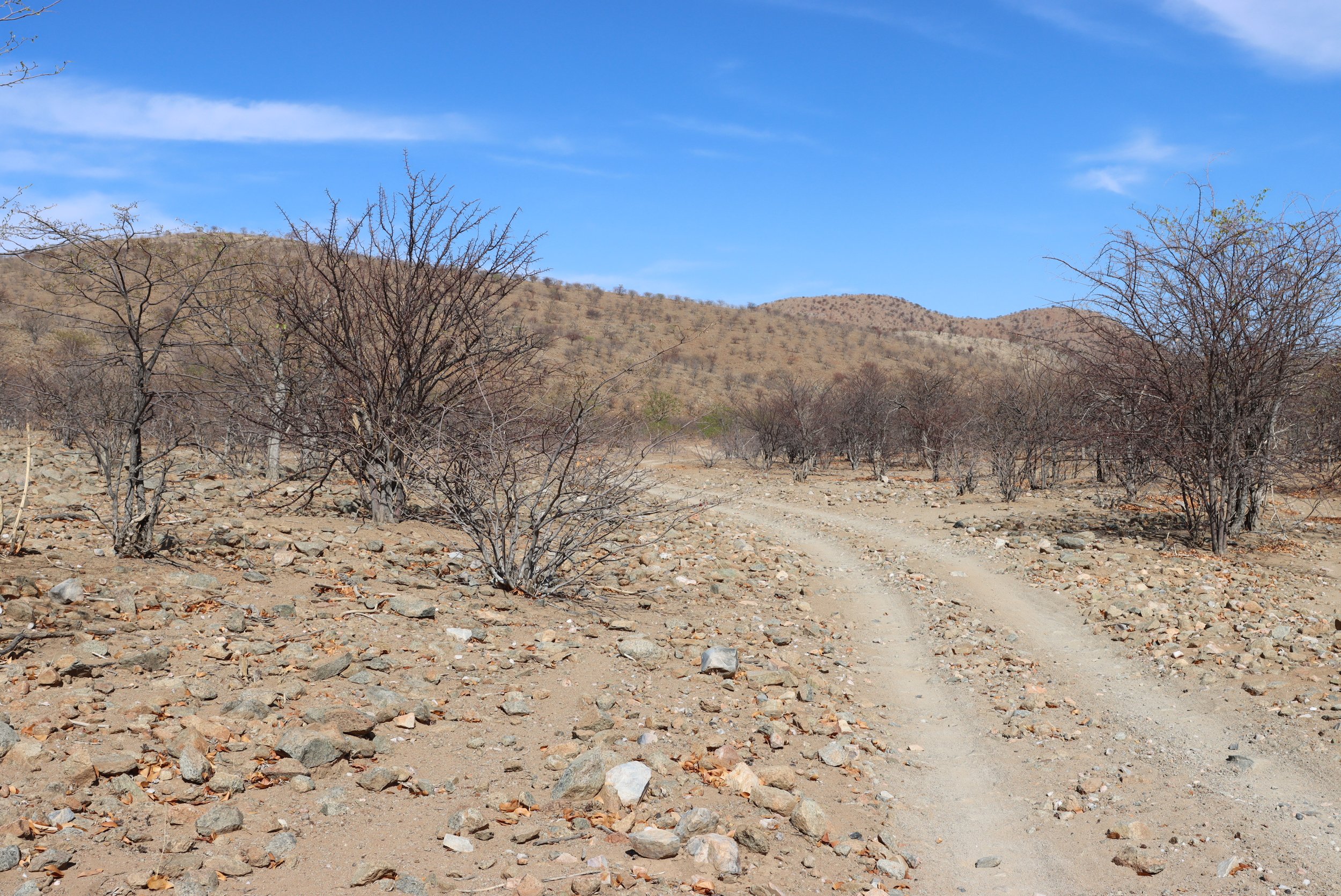Kaokoland Leopard
For the second time in three hours, the hair lifted on the back of my neck. This time it was as I listened to the Herero chants by tracker Kapetja and game guard Nico. As we slowly drove back through the local village and into our bush camp, Nico’s bass tones were immediately followed by Kapetja’s guttural Huh!!, Huh!! Mimicking the big tom leopard’s sawing heard as he approached our bait tree three hours previously. When asked, Nico explained, “We are telling our ancestors that an animal that could kill us or our children or our livestock has been killed!”
My panic spiked as PH, Kabous Grünschloss, asked again “Can you see him?” ‘Him’ was a big male leopard. Kabous had leaned over only 30 seconds before to whisper in my ear that the cat was in the bait tree and feeding on the meat. I had slowly leaned into the stock of the MG Arms Ultralight and looked through the [very bright] Leupold riflescope. And…I saw a blob in the dying light of the Kaokoland sun. Now even Kabous sounded a bit concerned when, for the third time he breathed “Can you see him?” Just at that moment, the blob resolved itself into the animal I had come so far to hunt. The male leopard was quartering towards our blind, stretching its neck to grab a mouthful of the zebra hindquarter. The crosshairs rested on the point of his shoulder and the actions that cause a rifle to fire happened.
When I booked my leopard-centric hunt with Jamy Traut Hunting Safaris, they told me that I would be staying in either their Kaokoland or Watersberg concession. Both are superb areas for these elusive cats, but they are as different in habitat as night-is-to-day. Kaokoland is an arid landscape that can look like a moonscape, particularly when in the grip of a drought like the one going on when I arrived. Watersberg, on the other hand, as the name implies, is a tabletop mountain characterized by thick bush and lots of rain. I told Jamy and his staff that I did not care where I hunted for leopard. I just wanted the best opportunity at getting a representative male.
For two reasons, I am very glad we ended up in the Kaokoland Conservancy. First, being an unrepentant child of the Western US, I love to be in places that are dry and have a big sky. Second, a set of scientific studies to determine how many leopards occur in various regions across the entirety of Namibia included Kaokoland. As a professor who has spent a good deal of time thinking, and writing, about conservation biology, it gave me data to study; yep, I’m a geek, and I’m ok with that.
What I was ignorant of when I chose to hunt leopard with Jamy Traut, was that the country of Namibia contains a population of leopards numbering at least 11,000, with Kaokoland having one of the highest densities of these spotted predators. A major contributing factor for the wealth of leopards across Namibia, and particularly in Kaokoland, is the Conservancy System. These systems, administered by local governments, place value on dangerous and destructive predators, like leopards, through the assigning of quotas for sport hunting. Local inhabitants, through their Conservancies, protect these animals because of the monetary gain from hunters’ dollars. Or, to put it in science-speak “Legal consumptive use of leopards through trophy hunting is a means of generating revenue in remote areas.”
So, we were in a leopard honey-hole. I didn’t know this until after my hunt, but that goes a long way in accounting for what we saw in the way of leopard sign. Spoiler alert: Kabous, tracker Kapetja and Game Guard, Nico, identified the tracks of around 10 separate cats – including young males, mature females, and big, mature males. From this plenty, they enticed five cats into trees; they were able to identify the different cats using trail cameras at the bait sites.
STAY TUNED FOR THE NEXT INSTALLMENT OF KAOKOLAND LEOPARD

